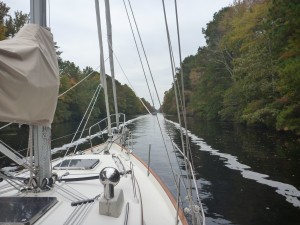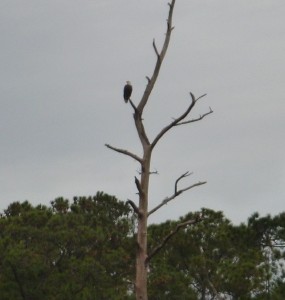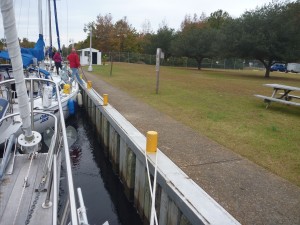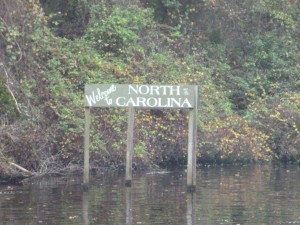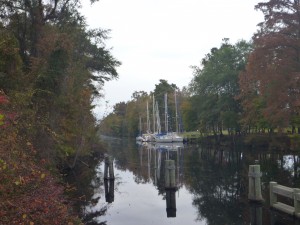Thursday – 05 November –
Knowing we would be having a longer day on the water today, we prepared for an early departure and left the breakwater of the marina at 0700.
We approached the Alligator River Bridge with the friendliest bridge tender so far. When we told him we would see him in six months for our return, he told us they would “leave the lights on”. This was our first swing bridge (so rather than going up it pivots around.)

With the sun out and the temperature warmer we both enjoyed shedding the fleece, taking off our shoes, and putting on short sleeved T-shirts. We enjoyed meandering through the Alligator River Wildlife refuge on the Alligator River/Pongo River Canal. We kept our eyes open for more bald eagles and bears, but didn’t see either.
But we did see a deer trying to swim across the waterway. Neither of us even knew deer could swim! A powerboat was trying to overtake us at the same time, and the deer thankfully realized it wasn’t safe to make the journey, so before crossing our bow, it turned around and paddled furiously back to shore and safely back up onto land.
We definitely enjoyed the changing landscape of the wetlands and woods.
Today was the first day that we really got to experience the “slow pass” maneuvers for overtaking boats. Powerboats can go much faster than sailboats, but if they pass at high speed the sailboats they leave in their wake will be doing some major rocking and rolling. Boating etiquette is that the overtaking vessel radio the boat to be overtaken and announce their intention to pass. The boat being overtaken slows down, allowing the passing boat to pass, and the passing boat slows down to reduce the effect of the wake. It is amazing to see how much water the larger powerboats are pushing with their bows as they approach from behind and there were times we were just hoping they would slow down. For the most part they all did, and the journey was quite enjoyable even with all the passing boats.

We opted for a quiet evening aboard in a quiet marina on Dowry Creek. We were forced down below by the ravenous mosquitoes….who would have thought we would have to worry about mosquitoes in November?!?!?
Tomorrow we will continue our journey, hoping the weather forecasters are wrong and expect to arrive at River Dunes Marina for at least a two night stay….. we are very much looking forward to the steam showers we have heard about at this marina.
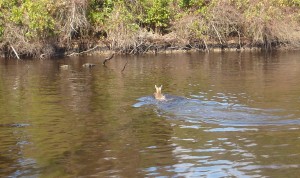
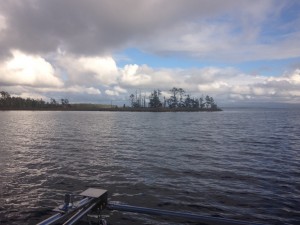
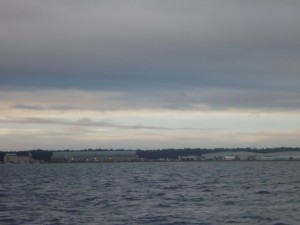
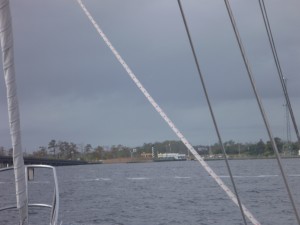
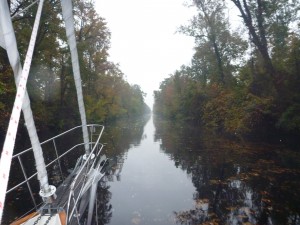
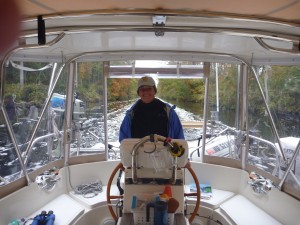 We woke up to rain, and it never stopped. Our raft-mates all were early risers and and we were able to push off from the Visitor Center at 0715 to start making our way in what turned out to be a very curvy and at times narrow canal and river.
We woke up to rain, and it never stopped. Our raft-mates all were early risers and and we were able to push off from the Visitor Center at 0715 to start making our way in what turned out to be a very curvy and at times narrow canal and river.
